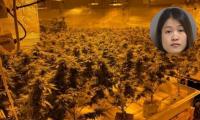Heatwave affects Rawalpindi vendors
City vendors are in a difficult position to do their business during the unprecedented heatwave plaguing Rawalpindi city. The record-breaking temperature has exacted a serious economic toll, with vendors across the city, many still recovering from coronavirus days.
Shahid Naqvi, a fruit vendor in Sultanpura, has been selling fruits in the area for more than ten years now. Parked under a large canopy that offers shade from the sun, he waits for customers. “The heat this year has been the worst, and it is only April. It will get worse. The recent heatwave in the city has also affected my business since customers do not come out much and my fruits get rotten in the scorching heat during the day.
“I am also one of the many street vendors in Rawalpindi city who conduct business at the risk of eviction by the Rawalpindi Municipal Corporation (RMC), an additional loss in daily wages these days. I just manage, one has to,” he adds.
Excess heat from some vendors’ burners often raises the temperature near the cart. Working in such conditions could have put their health in danger.
The last week of March 2022 was exceptionally hot for Pindiites, as the temperature in the city was much higher amid an ongoing heatwave affecting congested areas. This is likely to continue for another few days, according to the Meteorological Department (MD).
“The unusual and early onset of high temperature in the city has citizens alarmed. However, some areas in the city find it hotter than other areas. For example, PWD is usually five degrees hotter than its immediate neighbor Bahria Town. Within an area, there’s a temperature difference between housing societies with open spaces, landscaping, or trees, and those without,” says Naveed Hussain.
“Given that a large population of the city resides in congested areas, the congestion, lack of open spaces and olive green parks all contribute to the increased warming in those areas. The lack of green cover in the city also adds to warming as currently only a few areas and housing societies make for the city’s green cover,” adds Naveed.
“Considering the continued pattern of heatwaves and increasing warmth in the city, why is Rawalpindi city not more prepared? With about 70% of the city’s green cover lost in the last four decades, increasing land surface high temperature against the backdrop of rapid construction is but natural,” says Salma Zaidi.
Salma adds, “Building material used in construction plays a key role in the heat effect. Changes in urban surfaces, impervious surfaces, or changes in land use modify the temperature of a city. Building material and surfaces such as asphalt absorb the sun’s heat, leading to an increase in surface temperature and overall temperature. Infrastructure can considerably alter the temperature of a certain part of the city.”
-
 Critics Get Honest About 'A Knight Of The Seven Kingdoms'
Critics Get Honest About 'A Knight Of The Seven Kingdoms' -
 Why Harry Unlikely To Meet William, Kate During UK Return?
Why Harry Unlikely To Meet William, Kate During UK Return? -
 X To Change AI Chatbot 'Grok' After Outrage Over Explicit Deepfake Images
X To Change AI Chatbot 'Grok' After Outrage Over Explicit Deepfake Images -
 Princess Eugenie Set To Hit New Milestone As Andrew's Eviction Looms
Princess Eugenie Set To Hit New Milestone As Andrew's Eviction Looms -
 Emilia Clarke Gets Honest About Featuring In Shows Like 'Game Of Thrones'
Emilia Clarke Gets Honest About Featuring In Shows Like 'Game Of Thrones' -
 Amazon Employees’ Break-time Fight Ends In Murder In Texas
Amazon Employees’ Break-time Fight Ends In Murder In Texas -
 Peter Jackson Reveals A Viggo Mortensen Mishap In 'LOTR' Fans Totally Missed
Peter Jackson Reveals A Viggo Mortensen Mishap In 'LOTR' Fans Totally Missed -
 Marsh Farm: Work Underway On Andrew Mountbatten-Windsor's New Home
Marsh Farm: Work Underway On Andrew Mountbatten-Windsor's New Home -
 'Rip' Director Dishes On Matt Damon, Ben Affleck's ‘brotherly’ Dynamic
'Rip' Director Dishes On Matt Damon, Ben Affleck's ‘brotherly’ Dynamic -
 Meghan Markle Handed Strict Warning: ‘You’re Playing With Fire In A High Risk, High Noise’ Game’
Meghan Markle Handed Strict Warning: ‘You’re Playing With Fire In A High Risk, High Noise’ Game’ -
 Paul McCartney Reveals How Close He Came To Giving Up Music
Paul McCartney Reveals How Close He Came To Giving Up Music -
 Kate Middleton’s Secret Message Decoded: ‘She’s Done With All This!’
Kate Middleton’s Secret Message Decoded: ‘She’s Done With All This!’ -
 Police Uncover Secret Cannabis Empire Ran By New York Woman
Police Uncover Secret Cannabis Empire Ran By New York Woman -
 'Euphoria' Season Three Trailer Shows Chaotic Life After High School
'Euphoria' Season Three Trailer Shows Chaotic Life After High School -
 Marisa Abela Opens Up About Impact Of Cancer Treatment On Lifestyle
Marisa Abela Opens Up About Impact Of Cancer Treatment On Lifestyle -
 Kensington Palace Shares Video Of Windsor Castle Ceremony
Kensington Palace Shares Video Of Windsor Castle Ceremony



